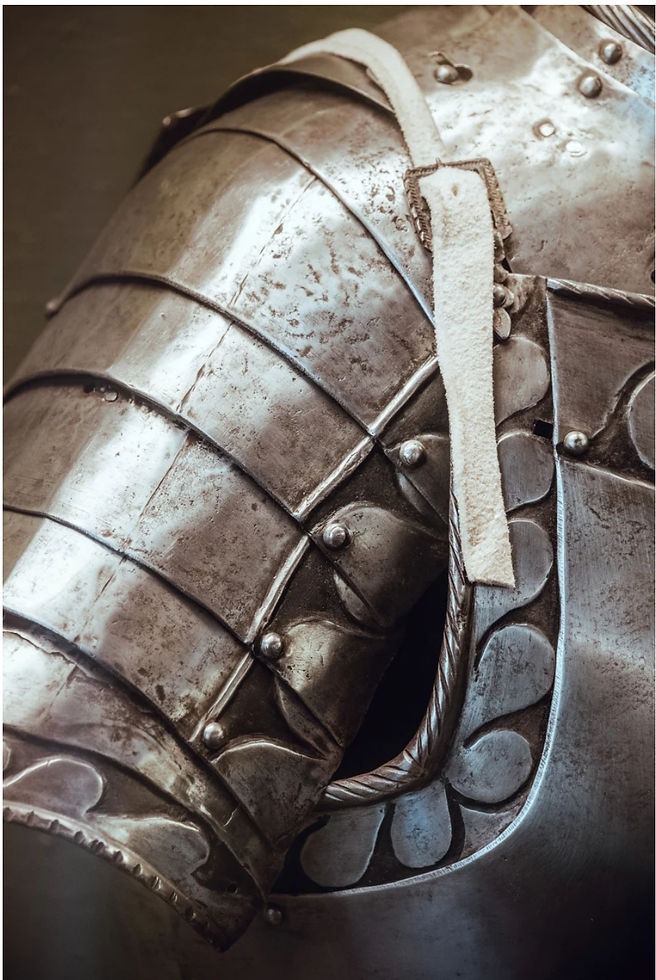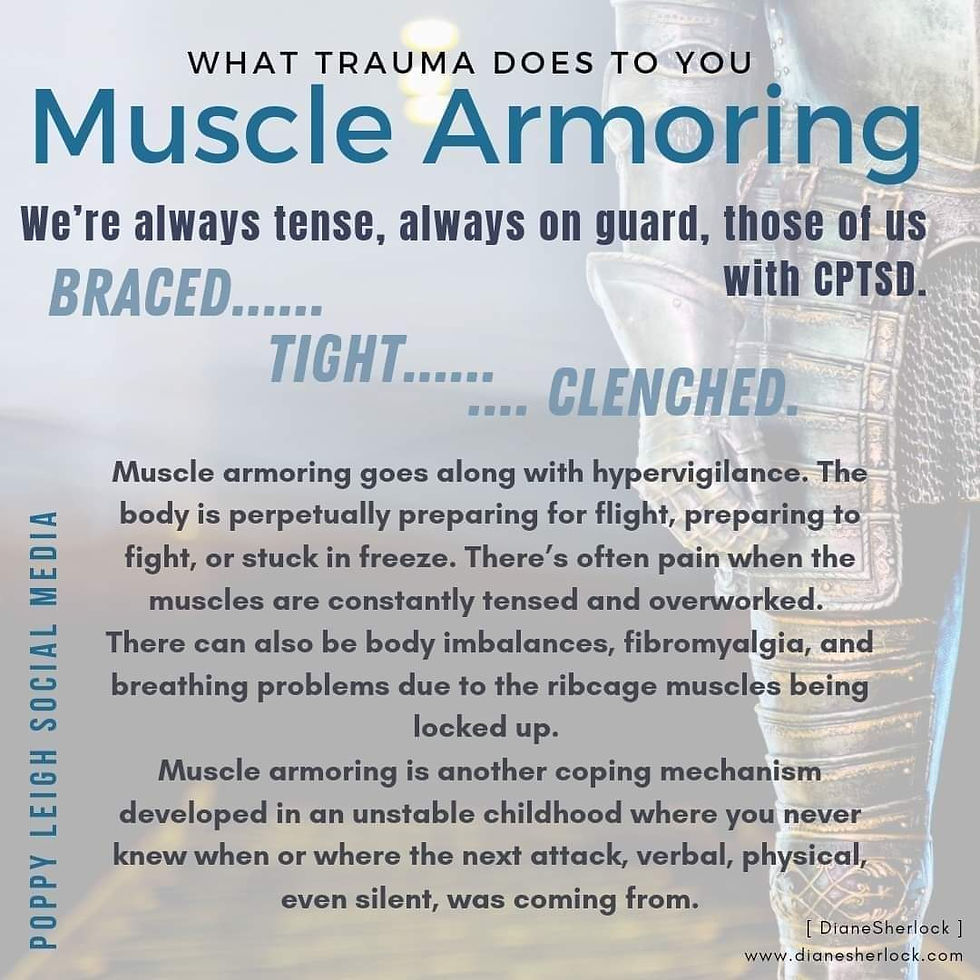
On this episode of What trauma does to the body: MUSCLE ARMORING 🦾 (no, not in a good way.)
- jasminessteiner
- Dec 11, 2022
- 2 min read
We’re always tense, always on guard, those of us with CPTSD.
Braced.
Tight.
Clenched.

Muscle armoring goes along with hypervigilance. The body is perpetually preparing for flight, preparing to fight, or stuck in freeze. There’s often pain when the muscles are constantly tensed and overworked. There can also be body imbalances, fibromyalgia, and breathing problems due to the ribcage muscles being locked up. Muscle armoring is another coping mechanism developed in an unstable childhood where you never knew when or where the next attack, verbal, physical, even silent, was coming from.
According to Urbanfitt.com:
FUNCTIONS OF MUSCULAR ARMOR:
* Keeps potentially explosive emotions contained
*Acts as a protective coping mechanism resulting from the fight or flight impulse being continually inhibited into a state of freeze often experienced in victims of abuse. See Polyvagal Theory
*Wards off the emotions of others and provide a physical barrier to external stress or threat like a protective container.
*Creates a sense of physical safety and containment as a coping mechanism to deal with chronic stressful life events
Body armor and character armor are essentially the same. Their function is trying to protect yourself against the pain of not expressing things that society says you may not express. Muscular armor is character armor expressed in body, muscular rigidity.
Armoring is the sum total of the muscular attitudes which a person develops as a defense against the breakthrough of emotions, especially anxiety, rage, sexual excitation. Character armor is the sum total of all the years of the muscular attitudes that have also been incorporated in the person’s character through a more stimulated habitual nervous system response.
An armored person doesn’t feel their armor because it develops over time and, as such, we wouldn’t notice the accumulation of muscular tension, fascial adhesions and blocks. What is body armor made of? Hypertonic fascia. We accumulate denser connective tissue (that is, fascia) when we engage in body armoring.
Article shared from ----- https://dianesherlock.com/2019/01/01/what-trauma-does-to-you-muscle-armoring/
☆☆☆ the body braid is something I have been telling my doctor I need to get, I firmly believe, as he does, that it will be lifechanging for me. I have such immense muscular and connective tissue issues .
I hope this helps someone.
You are Love.
Xo Jazzy ❤️




Comments